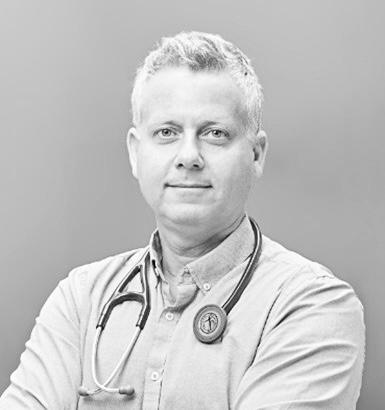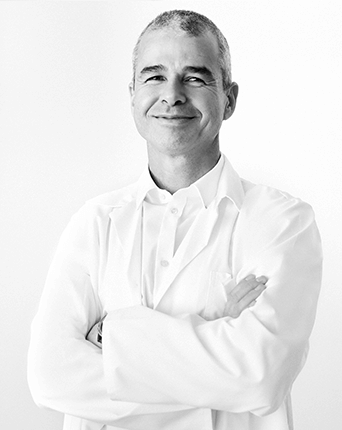
Rehabilitation Options, Including Hyperbaric Oxygen Therapy (HBOT), for Stroke Patients

Strokes are “a leading cause of serious long-term disability” in the United States. Given that “87% of all strokes are ischemic” or caused by artery or vein blockage, it makes sense that most patients suffer long-term functional impairments.
These impairments can range from paralysis, speech difficulties, and sensory issues to a host of other cognitive dysfunctions. Additionally, many stroke patients have had a stroke before—“nearly 1 in 4” survivors have suffered at least one stroke previously.
Rest assured, multiple rehabilitation options are available for stroke patients, including hyperbaric oxygen therapy (HBOT). We dive into the key details below.
Remember that each person’s medical condition and background are entirely unique. Thus, speaking with a physician about treatment options is essential to getting back to optimal health.

What Are the 3 Common Stroke Relief Options?
Stroke relief generally entails working with a diverse medical team of physicians, nurses, and therapists. This support team may recommend one or more of the following options:
- Speech therapy: Stroke patients can experience speech challenges, ranging from slurred world to significant difficulties with oral communication or understanding people (aphasia). This is due to damage to the “left side of the brain that controls speech and language.” Cases like this often merit speech therapy.
Patients work with speech-language pathologists (SLPs) to relearn techniques such as:
- Controlling mouth and throat muscles to speak more clearly and adequately swallow
- Participating in cognitive language exercises to restore communication and comprehension skills
Research illustrates early speech intervention with aphasia patients “had a massive increase in their ability to communicate at 12 and 26 weeks after their stroke.” Patients could speak better and exhibited less difficulty finding and using the right words.
- Physical therapy: A physical therapist (PT) engages patients in movement exercises to help them reacquire motor skills. PTs generally help stroke patients relearn activities such as walking, sitting, standing, and switching from one movement to another.
Medical experts believe consistent PT lowers “risks of hospital readmission within a month after discharge” because it helps patients:
- Restore movement and accomplish tasks
- Plan for the next step of post-acute care (e.g., patient rehab facility, skilled nursing facility, or home care assistance)
- Occupational therapy: Occupational therapists help patients carry out everyday activities. They aim to help stroke patients live as independently as they can. OTs work with post-stroke patients to assess how the stroke has affected their lifestyle.
For those who have difficulties dressing, cooking, or bathing, the OT will find solutions to help carry out these activities of daily living to the best of their ability. These statistics outline the importance of OT in the recovery process.
- One study of Medicare claims data found that “Rehabilitation services including physical therapy and occupational therapy play important roles in promoting functional recovery and preventing deconditioning during acute hospitalizations.” However, “Only 61% of patients with ischemic stroke received both physical therapy and occupational therapy services in the acute setting.”
One study notes that patients who participated in OT programs focused on impairment and basic living activities “progressed to more advanced activities over time (e.g., less bed mobility, more home management).”

The Groundbreaking Therapeutic Approach of HBOT
An up-and-coming therapy for long-term stroke recovery that has shown promise in clinical research is Hyperbaric Oxygen Therapy (HBOT). HBOT has clear indications of brain-cell rehabilitation in patients suffering from post-stroke disabilities.
HBOT and its apparent benefits for post-stroke patients were studied and reviewed in an article published in the peer-reviewed journal PLOS One:
- The participants were exposed to a unique protocol, including daily HBOT sessions over two months. All the patients showed improved neurological functioning, indicating “that HBOT can lead to significant neurological improvements in post stroke patients even at chronic late stages.”
- Noticeable recovery included “regained speech (almost fluent) and reading capabilities.” Even in patients with less dramatic results, everyday tasks like bathing and dressing became possible unaided by the end of the treatment period.
- Patients were further assessed using brain metabolism imaging (SPECT scans) to examine brain activity during the HBOT treatment. “The SPECT after HBOT demonstrated the disappearance of the perfusion lesions.”
- The study indicated a link between oxygen and stroke—“increasing the plasma oxygen concentration with hyperbaric oxygenation is a potent means of delivering to the brain sufficient oxygen for tissue repair.”
Not only did the study determine significant improvements in patients treated with HBOT, it crucially found that the progression occurred in patients even many months after the stroke event.
The study’s objective was to “evaluate the effects of HBOT started in the late-chronic phase after the acute stroke.” All the patients experienced strokes between six and 36 months prior to the HBOT treatment.
The Aviv Medical Program: The Road to a Better Life
Backed by over a decade of research, the Aviv Medical Program can include HBOT, along with cognitive training, dietary coaching, and physical performance training to help you recover even long after a stroke.
The program aims to offer patients a customized, coordinated, and multidisciplinary health plan to address their specific goals. As the aging process affects every person differently, each Aviv Clinics plan is individualized based on a patient’s post-stroke recovery needs.
Here’s how our process works:
- Assessment: Our dedicated team will conduct a thorough assessment to gain a holistic understanding of your health and craft a personalized health plan.
- Treatment: Under the supervision of Aviv’s medical staff, the treatment plan will entail a variety of health programs that are meant to get you on the road to recovery.
- Analysis: We will track data on how your treatment plan is progressing and make the necessary adjustments along the way.
- Follow-up: Upon conclusion of the treatment, our team will continue to follow up on your progress via an Aviv wearable device. This will allow us to send you reports on your health and performance.
Keren’s Inspiring Story
A holistic treatment plan that addresses the mind and body is key to successful recovery. Former Aviv Clinics patient Keren Trabelsi is a true testament to this fact.
Businesswoman and mother Keren Trabelsi suffered an ischemic stroke, causing paralysis on the left side of her body. Also, cognitive issues made daily tasks difficult, which did not make her feel as capable as she had been before. She sought the help of Aviv Clinics.
Now, 13 months later, she can walk comfortably, type with her left hand again, and engage in cognitive activities (i.e., crossword puzzles, Sudoku, etc.).
“[ Aviv Clinics is] like driving a Ferrari on the road to recovery versus driving like an old beaten-up car….”
Watch her post-stroke recovery story.
Stay current on our client success stories to learn more about what the Aviv Medical Program can help you achieve.
Is the Aviv Medical Program Right for You?
If you’ve been experiencing cognitive or physical challenges since your stroke, the Aviv Medical Program may be able to help. We have treated thousands of patients suffering from various conditions, enhancing their quality of life.
We encourage you to speak with one of our licensed medical staff to see if it’s right for you, as each person’s body, medical history, and circumstances differ. Our staff will take the time to understand your health history, symptoms, and goals. This process will help us determine whether the Aviv protocol is a good fit.
How Long Does It Take to See Results?
Improving physical and cognitive performance does not happen overnight. The Aviv Medical Program requires time and careful compliance to achieve success.
HBOT sessions take approximately two hours daily, five days a week, for 8-12 weeks. However, this timeline may vary across patients. Our clients see members of the Aviv healthcare team for additional therapies or coaching (e.g., cognitive training, dietary coaching, and physical performance training) multiple times each week.
Learn More about Post-Stroke Recovery
If you need help finding a stroke recovery plan, contact Aviv Clinics. Our diverse team of medical professionals is experienced in crafting customized treatment plans that have brought significant and fulfilling results for our patients.
Improving your quality of life begins here.
Aviv Medical Program provides you with a unique opportunity to invest in your health while you age.


